16 myths about CRM-systems
Having finally decided to start a blog on Habré, we made up a thematic plan for ourselves. After deliberation, they included useful questions about various business processes, working with TK, KPI, laws of working with a corporate customer ... And somehow immediately swept away the idea of explaining how this software works. But comments to the posts forced us to deviate exactly one time from our plans.
We have long felt this problem: the CRM-system has ceased to be CRM in the classical sense, and this raises many questions and collisions. It's time to deal with the myths and legends about the CRM-system and its place in the business. Autumn is already here, it's time to tell some details to those who decided to automate the business right now.
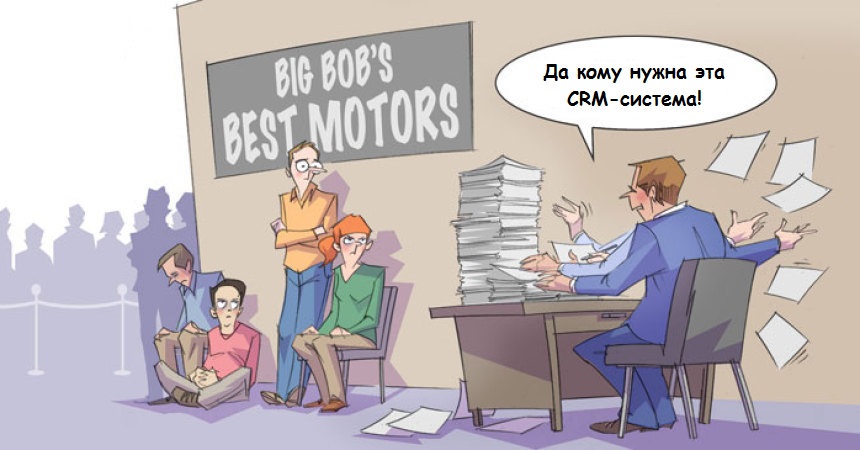
This is where work began on this post. Many thanks to Louie for the question - he formulated it more precisely than all our customers combined.

')
Similar questions are not uncommon, and they have a group of prerequisites.
And yes, the CRM system is the Customer Relationship Management system, the customer relationship management system.
This is not an exhaustive list of reasons, but already this information is enough to generate a huge number of myths and strange statements about CRM-systems.
In this section, we have collected large-scale "claims" to CRM, which can be heard from customers, met at specialized resources and conferences, found in the comments, read in critical articles and reviews.
Our overseas vendor colleagues have a phraseological phrase called “A bad workman blames his tools” (A bad master always has a tool to blame). This is from the category of a bad dancer, whois hampered by something , and faces that are foaming at the mirror. CRM-system involves three areas: people, processes, technology. Accordingly, technologies solve a maximum of a third. Problems can be within the CRM itself. And they can have an employee or his manager.

From a technical point of view, CRM is a simple thing: a set of forms, tables, charts (all this is a graphical interface, GUI), operations and scripts responsible for handling data, a database. The task of the developer is to ensure maximum validation of input data, convenience, storage and quick access to any amount of information through graphics, filters, reports, dashboards. From the user's point of view, for some reason, it turns out to be difficult. Thus, according to a survey of ITIC CRM Deployment Trends Survey (hereinafter - ITIC survey), 43% recognize the complexity of the main obstacle to the implementation of CRM. We, the developers, are alien to subtle psychology, but there is a suspicion that the matter is in the traditional rejection of the new.
But from a business point of view, the problem is the non-acceptance of CRM employees as a tool. No one is afraid to enter customer data in Excel spreadsheets, but the opposite is true in CRM, although the signs are essentially the same. Moreover, the user enters the data once - and then all the entities are created in relation to this data. Look at the client card in RegionSoft CRM . Once the manager enters the data into the system, and then absolutely all the events connected with him are “pulled up” into the card: tasks, accounts, files, shipments, client requests, processes, contracts, distribution, etc., and the fields already filled in are used automatically - they do not need to hammer hands again. This is the initial logic and the essence of CRM: they found the client's card, and right there they looked at all the events, saw the state of the client, looked at the dynamics of relations with him, - full automation.
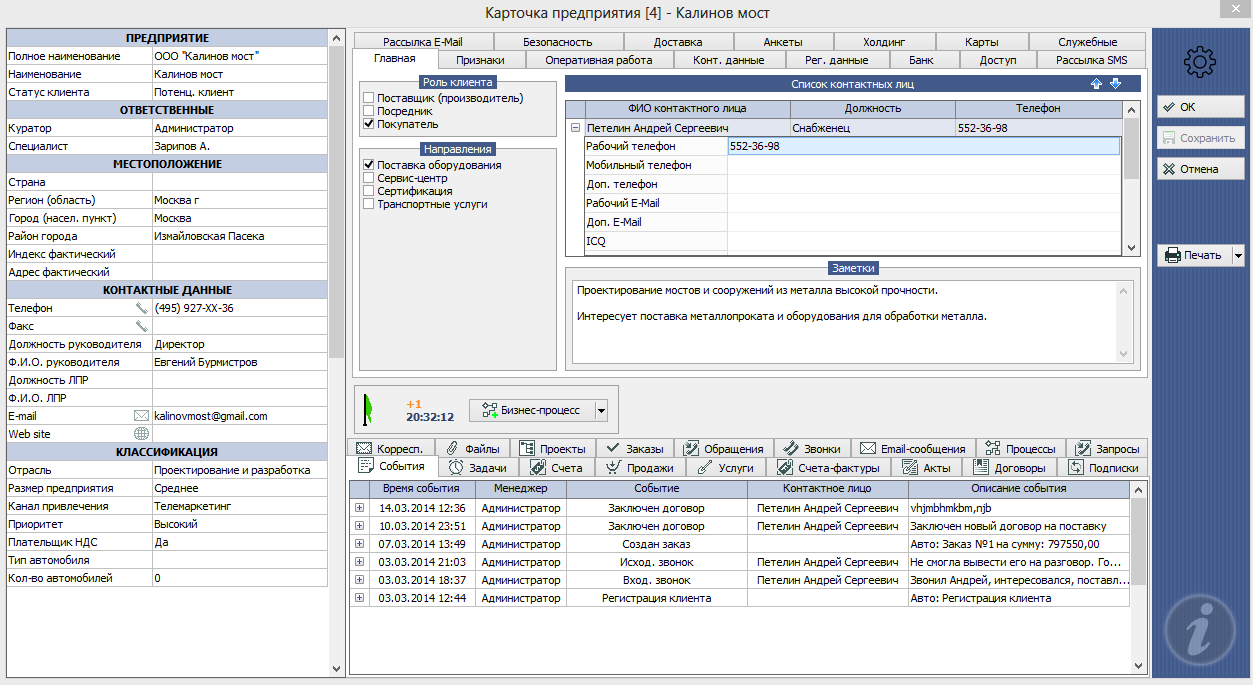
Thus, everything depends on the attitude of people to technology - if they are ready for automation, they correctly enter data and realize that CRM significantly speeds up and facilitates their work, then the relationship with the system will develop and a positive effect will not keep you waiting.
A CRM system is a technology that automates customer relationships. So, it is clearly divided into two parts: the IT interior (tools of improvement, access, database, backups, upgrades) and business logic (work in the system, its configuration). An internal expert, as a rule, is a person from a commercial service who takes a holistic view of all the processes taking place in a company and transfers his knowledge to the organization of work in CRM.
How does a system administrator or programmer see a commercial service? A group of not very advanced users with zoo programs, vague requirements and 1C in addition. How does a competent commercial director see this? As a set of related business processes and their automation. He knows exactly why CRM should integrate with the warehouse, 1C and the site and how the data works. Therefore, setting up CRM, reports, directories, sales funnels, business processes is its task, and IT can help with the implementation of requirements and the integration of internal technical specifications.
For example, in our RegionSoft CRM there is everything in order that the manager could independently configure his workplace. It is enough for him to enter the “Settings” section, where the user can set up specific parameters related to the enterprise structure, pricing, documents, data, and the parameters of his workplace: display of tables, settings of templates, interface appearance and so on.
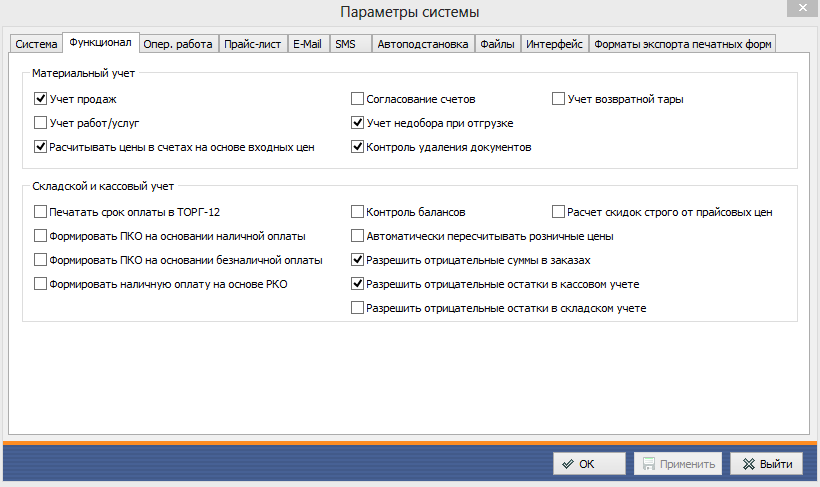
A very common mistake is the introduction of CRM in all divisions at once. Yes, today, some CRM-systems, RegionSoft CRM, among others, are the same “amusement park” from the comment: they are able to automate sales, marketing, warehouse, logistics, cash, personnel management and even production management and support services. This is the result of work on the integration of all business processes in a single corporate information system.
However, the introduction of CRM should be carried out gradually - this does not mean that you first need to automate sales, then marketing, and then the warehouse, this is illogical, since business processes are interrelated. The process of transition to CRM should be progressive: from gathering requirements and testing to training and transfer of existing data. In fact, introducing CRM, the company is reviewing its business processes, builds unambiguous chains of interactions, and this is not a quick and thoughtful process. The more carefully you approach the implementation process, the more effective the further work will be.
Of course, this is an investment - you invest in the intensification of processes in the company. And the ROI of such investments is often much higher than you expect precisely due to the increase in labor productivity caused by automation. I will cite a couple of examples that almost all companies have become ill at ease with.
Example 1. Coordination of documents. Until now, many companies do not use electronic document management systems and important documents may hang on executors or in a folder with the general director until the interested manager goes looking for paper and poking it in the hands of all coordinators. In this case, finding the document is the best outcome, sometimes they are simply lost and additional time is spent on recovery, and this may be the time of not only the employee, but also the client. In CRM, you can create a chain of approvals as a business process and run it every time you generate a new set of documents - as a result, it is enough to open the system to see at what stage of approval and for whom the document on a particular client hung. You save time that you can spend, for example, to negotiate with a new customer.
Example 2. Calls to the void. Zoo IP-telephony of our customers can not be compared with anything - sometimes it is even difficult to believe that all these providers manage to somehow survive in the market. In case CRM is not integrated with telephony in any way, managers may not recognize the client in the incoming call and miss the potential benefits. Well, or forget to call. In CRM, the client’s card is raised when it is called, and the manager is already talking in detail, based on the profile, relationship history, etc. I’m not talking about forgotten phone calls anymore - when you have several reminders, it’s hard to forget to do your job.
These examples vividly demonstrate how easily boring operational issues are resolved, which take time and customers away from the company, and simply money. Automation after some time after implementation significantly simplifies the work, employees work more efficiently, they have more time and fewer mistakes. CRM is starting to pay off. The exact timing of the return on investment is highly dependent on the size of the company and the cost of implementation.
CRM is expensive - a separate conversation and often not a myth at all. Indeed, there are very expensive CRM, which nevertheless are being implemented even in small companies - the honor and praise of their extra professional sales people and consultants. Thus, according to the same ITIC survey, the main obstacle in the implementation of CRM is the high cost of solutions, 57% of respondents indicated it. This is not surprising: the same respondents indicated that they are considering Salesforce.com, Sage, Microsoft Dynamics, Sugar CRM and Oracle / Siebel. In addition to the open source Sugar CRM (more on this later), these are extremely expensive solutions. Systems are easier to occupy the last places in popularity - they have worse PR, promotion, weaker counseling. But this does not mean that they are worse, they just have a different cost structure and different pricing.
Very often, when it comes to the high cost of a CRM system, both we and our competitors appeal to comparison with the cost of a corporate party - just the perfect option. But to compare entertainment with work is strange, so let's go through essentially.
For example, the company employs 3 salespeople with a salary of 25,000 rubles, their department head from 35,000, and two marketers from 30,000. The company is implementing RegionSoft CRM as a Professional, without discount. The cost of 6 licenses will come out 57,249 rubles one-time, that is, once for the whole project, without further subscription fees. That is, 9 541 p. per person at a time, well, or at 795 p. per person per month for a year. A ridiculous amount, considering that, from experience, each of them will increase its productivity by at least 15%.
It is also worth noting that there is the concept of the price of ownership of CRM. So, in the case of CRM leased by the SaaS model (as a service, cloud CRM systems usually work), the cost of ownership increases continuously as you pay the rent all the time, every month, like for mobile communication or the Internet. If you buy an on promise solution, you pay once the entire amount (well, or in installments), and your payments do not accumulate. Maximum, you can later buy or refuse to upgrade. It is much more profitable. In confirmation of my words, you can look at rental prices and on promise licenses from vendors supplying both types, and you will see that the price for the “server” is higher - so the CRM manufacturers “overtake” the customer to a more profitable cloud provider.
Plus, the cost of licenses is not always equal to the cost of the project: refinement, installation, training cost some money, it must be taken into account, as well as tariff plans for technical support from the vendor.
Fact. Even we have somewhere a free RegionSoft CRM 4.7 (current commercial 6.0) per user, without the possibility of networking. Actually, from the previous sentence it is already clear what free CRM is :-) In fact, vendors have three options.
These are really completely free CRM-systems, allowing to conduct clients and transactions with various restrictions. By the way, quite often similar versions are used by freelancers for accounting and work scheduling or by private individuals for running household chores.
Holivarnaya theme, especially for us. The fact is that our team avoids turning a product, a CRM system into a set of marketing chips: this is why users are still met with a strict desktop, not a funny helper or dashboard, our CRM is not integrated with VKontakte (by the way, you really Do you need it?) And we do not call our program omnichannel.
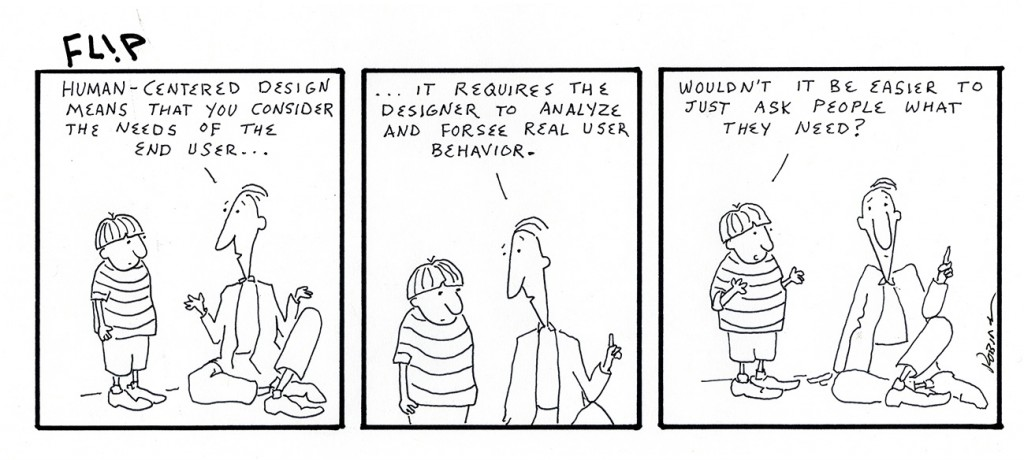
“Human-centered design means that you understand the needs of the end user ... that require the designer to analyze and anticipate the behavior of the real user.
- Isn't it easier to ask people what they want?
Today, many CRM-systems of our level (small and medium businesses), the interface follows the latest design trends, often at the expense of ease of operation and information. I will not give names in my blog, but, for example, what is the point of welcoming the manager at every visit with indicators for the month, especially at the beginning of this month? Enough informative monitor on the side. CRM is a corporate information system, and it should be informative, well-constructed and simple to the level it can be simple.
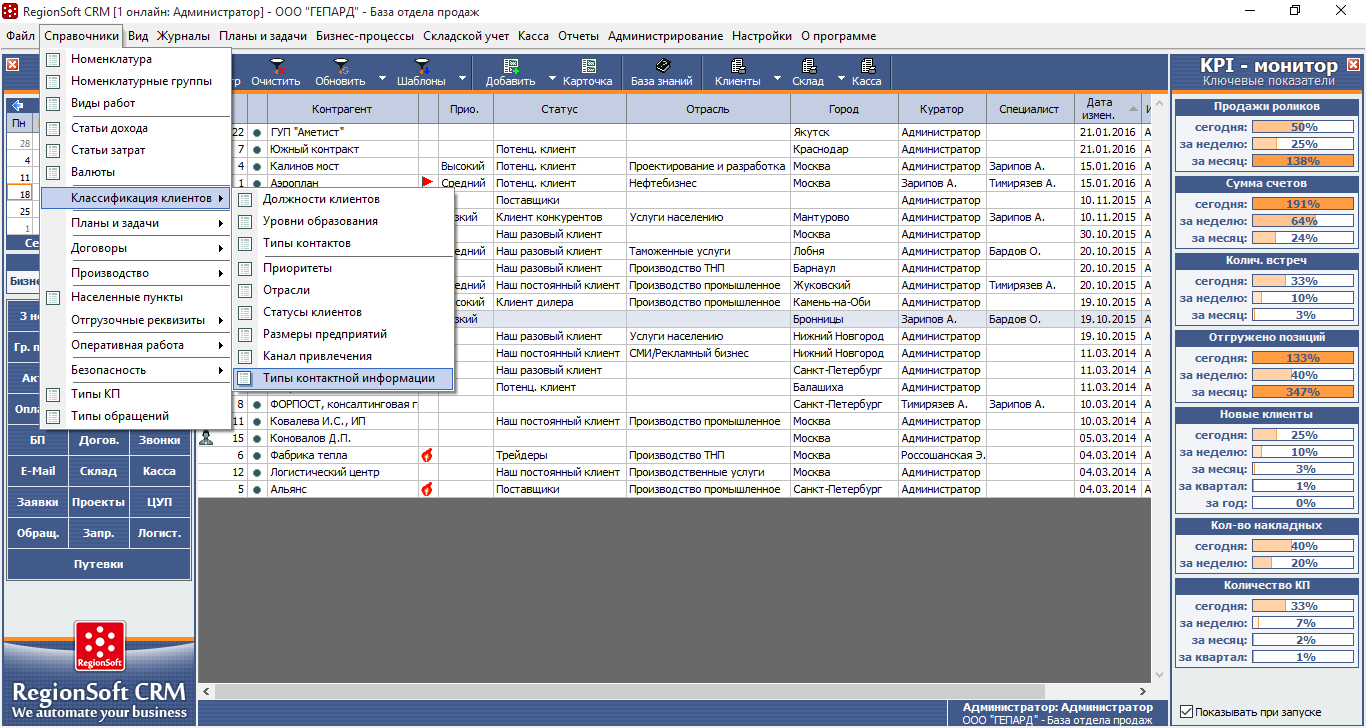
RegionSoft CRM main window (for those who asked, the logo and name change to the logo and name of the CRM user company)
But even if the developer managed to combine the latest design guides with functionality, this does not make the interface friendly, since data entry forms, tables, business processes, and so on. - The difficult moments of the CRM-system, which should be trained. Because it is worth going a little deeper, as soon as the user has questions. And training should not be a one-time act, but an entire session, with practical analysis of operations. So a friendly interface can be, but not intuitive when fully using a CRM system.
You can, that's right. Let's draw an analogy with a car. You have decided that you certainly need an exclusive GAZ-21 Volga: you buy a car for 100,000 rubles and start to upgrade and tune it, buy an engine, knots, paint, hire people, rent a garage with a pit, pay for welding, tinning, salon, wheels, wheels, chrome parts ... It will cost you a little over one million rubles, 10 times more expensive than the purchased base. And then you still will support all this.
The story of CRM on the knee is exactly the same as the story of the Volga. And again two options.
Of course, CRM "on the knee" happens, and there are examples of excellent projects, but in general, these are isolated cases. Just because such a project eats away nemeryanno forces, money, time and nerves. And he still has to go.
If today and for a long time you only need to write the names and phone numbers, the most primitive store of contact information, close the post and organize the Excel list - this is enough. Wait a minute though. Do not forget to create a backup and protection for the Excel workbook, otherwise even inept sorting will mix all the data, and they will be useless.
Once, when CRM was in its infancy, especially in Russia, it really was contact managers, notebooks with the ability to select data and set reminders. Today there are almost no such - if only as a module in some corporate software. The goal of modern CRM is to integrate and make smoothly work customer service, sales, support, logistics, warehouse and much more - by accumulating, storing and processing data in the system. Customer service is not all that is needed today for success, and CRM reflects that.
By the way, in many well-known CRM systems, this interaction is based not only on the internal logic of the system, but also on the embedded mechanisms of business processes. When creating the next process, all those responsible from different departments, deadlines, reminders and alerts are entered - thus, in a single chain, an entire group of relationships related to a specific process is displayed.
Most of all, it is surprising that some vendors themselves replicate this thought. Yes, there are already working prototypes of salespeople, such as online consultants based on machine learning and the IBM Bluemix and Kinect technology stack, but integration with CRM systems, data analysis and correct interaction is still quite far away. CRM-system does nothing for the user, it is a tool, the same as PC or MS Word. You do not expect that Word will make a contract or write a commercial offer?
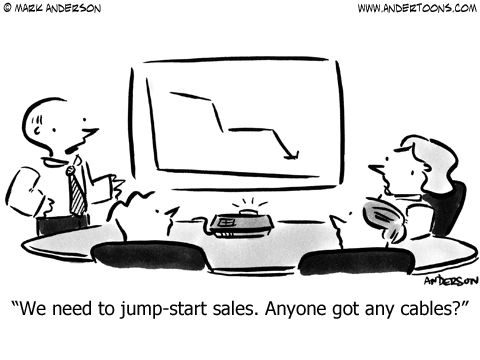 - We have to literally charge sales! Does anyone have a suitable cable?
- We have to literally charge sales! Does anyone have a suitable cable?
A CRM system is a great way to influence the sales cycle through innovation, automating repetitive processes and routines. Today, CRM additionally helps to communicate to managers with contractors and among themselves, honestly and objectively distributing tasks. Through the use of such systems, business expects fewer surprises and more successful sales. This effect is achieved due to the transparency and controllability of the actions and operations performed: from building a report to recording a conversation with a client.
It seems to you that it is crazy to compare CRM with Excel? By no means. Yes, if your CRM system is not compared to a competitor, then it will be compared to Excel. For a long time, it seemed to be compared with tables in Excel, in which contact details are written and put a plus sign in front of transactions. Not! One table turned consciousness. It was one Excel sheet of an average production company with supplies throughout Russia and the CIS. No macros, or formulas - just a huge number of cells with all the information, colored in all possible combinations of colors and fonts, to display the status of work on the client. I think if you got this file to their competitors, they would not be able to get to the bottom of all these statuses. The sheet included everything from purchases to warehouses. One person worked with him, since any tiny mistake would have destroyed this many years of work. And so, basically, Excel with filters and macros is already CRM in the vision of some companies.
Disappoint.

Excel for wimps. Here is the perfect CRM system!
This I ran through the basic comparisons that lead customers. In fact, comparing CRM and Excel is really crazy. Users excusable, we, professionals, are not. Close this question.
Delicious - on the third. This is the most favorite myth of the RegionSoft CRM team. We are pleased to receive his daily refutation in the form of thanks, but at the first stage of implementation it is more common than others.
About control. According to the survey, 87% of workers believe that CRM is being implemented solely for the sake of total oversight of their actions. Of course, the control element in the CRM system is present. For example, in RegionSoft CRM it is a KPI monitor, logging of actions, recording conversations with clients, tasks with a report requirement. In other CRM systems, this list may differ, but there are always control functions available to the manager. In exactly the same way, without the automated system, he will ask the manager about the results. Of course, CRM does not track the history of visits to sites or the installation of pirated software - for this there are other programs. CRM-system is designed for operational control over current activities, it does not carry out any supernatural espionage - all within the framework of the performance of official duties.

About dislike. First of all, the CRM-system does not like ... the leaders themselves. They are sickened by the very idea that it is necessary to devote time and attention to changing their working procedures, and to start building a sales system and customer relations based on automation. There is nothing strange in the fact that the same relationship is broadcast as a result. This is evidenced by the figures of the completeness of the functionality of the CRM-system. According to ITIC CRM Deployment Trends Survey, 52% of respondents said that they use more than 51% of CRM capabilities and only 18% operate on more than 75% of the functionality. At the same time, 87% of respondents when choosing a CRM focus on a set of features and features, 74% look at the price, 71% pay attention to ease of use, 45% turn to a vendor partner, 16% follow the advice of coaches.
It turns out that they implemented it for the sake of “introducing”, and the efficiency of use is questionable precisely because not all the possibilities are used. Hence the dislike. Who actively works in CRM initially, as a rule, quickly assesses all the advantages and benefits of automation.
About the time. Just count the time spent on finding a contact in Excel, a call, entering information, searching documents by folders. And then count the time it takes to open a client card, call from the CRM interface, and in a couple of clicks raise all documents, events and tasks. The difference is colossal.
In this section of the post, we will briefly respond to several common customer objections regarding CRM systems. In fact, there are much more of them, but the rest have narrower specifics or, on the contrary, deserve a whole post and will receive this post in the future.
Rather, not even a myth, but a common question. CRM — , , , . — . RegionSoft CRM :
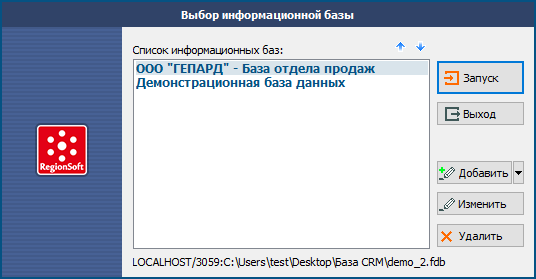
:
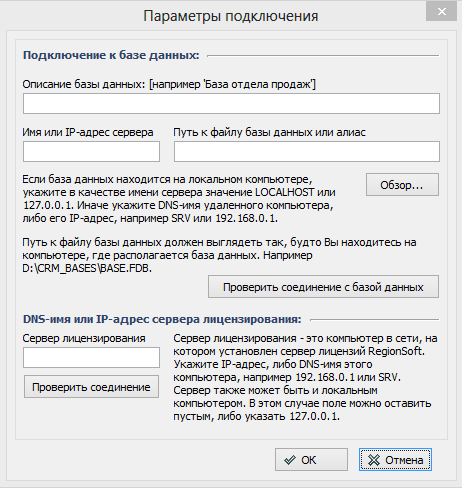
() -, , — . CRM, ( ), CMS, (). RegionSoft Application Server .
, CRM -, . , , . , , CRM-, . — CRM , , .
, . , CRM . — , : - , - , - , , , , .. CRM: . .

CRM — , . CRM- , , , . , . , « ». CRM- , — , «» . , … , . . , — .
CRM- , - , - . , RegionSoft CRM Media — CRM- . , , : , , , , , . , , CRM Media . , . «» CRM- , , — CRM-.
, : CRM- . CRM -, , . . — , .
CRM — , , -. , … , XXI .
Throughout December, we offer discounts on RegionSoft CRM and all our proprietary software. From December 1 to 15 - 15% and steep terms of installment and rental. We do not have -70% and -90%, because we keep the economically reasonable price for the license, and do not take it from the ceiling.
, . We ask you to answer the questions in a simple form - there are only 10 plus 3 of them for those who are interested in learning more about us. , — , - ITIC.
Take a poll here
, : -. .
We have long felt this problem: the CRM-system has ceased to be CRM in the classical sense, and this raises many questions and collisions. It's time to deal with the myths and legends about the CRM-system and its place in the business. Autumn is already here, it's time to tell some details to those who decided to automate the business right now.

Luna Park with unusual services and entertainment
This is where work began on this post. Many thanks to Louie for the question - he formulated it more precisely than all our customers combined.

')
Similar questions are not uncommon, and they have a group of prerequisites.
- The expanded set of CRM systems features. Today these are universal products that cover a significant part of the automation needs of companies. CRM, which work on the market for 10-15 years, ceased to be programs for sales and confidently backed up by ERP.
- The desire to call CRM everything that somehow captures customer information: collects leads from social networks, automatically sends spam to Viber, works as a notepad for recording contacts and transactions, helps employees communicate. All this is CRM-systems, as a result, the concept is greatly blurred.
- The desire of vendors to build marketing is not around the product, but in the product itself, overflowing with features not related to CRM and real needs.
- Quite a small amount of popular resources on the concept of CRM and CRM-systems. Abroad, the number of such sites amounts to dozens, in Russia this niche is not very busy, and what is occupied is not always objectively. There are very few platforms for dialogue like Habr.
- The good lies, the bad runs far: as a rule, negative cases of dissatisfied customers are publicly voiced, so it may seem that the introduction of CRM is dangerous. Alas, in such complaints everything is blamed on the vendor despite the fact that often it all comes down to the mistakes of training and software perception in the company. From the beautiful: "CRM itself does not sell at all for some reason."
And yes, the CRM system is the Customer Relationship Management system, the customer relationship management system.
This is not an exhaustive list of reasons, but already this information is enough to generate a huge number of myths and strange statements about CRM-systems.
Major stories
In this section, we have collected large-scale "claims" to CRM, which can be heard from customers, met at specialized resources and conferences, found in the comments, read in critical articles and reviews.
Technology decides, nothing depends on us, it’s the hands of the developer
Our overseas vendor colleagues have a phraseological phrase called “A bad workman blames his tools” (A bad master always has a tool to blame). This is from the category of a bad dancer, who

From a technical point of view, CRM is a simple thing: a set of forms, tables, charts (all this is a graphical interface, GUI), operations and scripts responsible for handling data, a database. The task of the developer is to ensure maximum validation of input data, convenience, storage and quick access to any amount of information through graphics, filters, reports, dashboards. From the user's point of view, for some reason, it turns out to be difficult. Thus, according to a survey of ITIC CRM Deployment Trends Survey (hereinafter - ITIC survey), 43% recognize the complexity of the main obstacle to the implementation of CRM. We, the developers, are alien to subtle psychology, but there is a suspicion that the matter is in the traditional rejection of the new.
But from a business point of view, the problem is the non-acceptance of CRM employees as a tool. No one is afraid to enter customer data in Excel spreadsheets, but the opposite is true in CRM, although the signs are essentially the same. Moreover, the user enters the data once - and then all the entities are created in relation to this data. Look at the client card in RegionSoft CRM . Once the manager enters the data into the system, and then absolutely all the events connected with him are “pulled up” into the card: tasks, accounts, files, shipments, client requests, processes, contracts, distribution, etc., and the fields already filled in are used automatically - they do not need to hammer hands again. This is the initial logic and the essence of CRM: they found the client's card, and right there they looked at all the events, saw the state of the client, looked at the dynamics of relations with him, - full automation.

Thus, everything depends on the attitude of people to technology - if they are ready for automation, they correctly enter data and realize that CRM significantly speeds up and facilitates their work, then the relationship with the system will develop and a positive effect will not keep you waiting.
The CRM-system should be under the authority of the IT service, and it was hung up here on salespeople!
A CRM system is a technology that automates customer relationships. So, it is clearly divided into two parts: the IT interior (tools of improvement, access, database, backups, upgrades) and business logic (work in the system, its configuration). An internal expert, as a rule, is a person from a commercial service who takes a holistic view of all the processes taking place in a company and transfers his knowledge to the organization of work in CRM.
How does a system administrator or programmer see a commercial service? A group of not very advanced users with zoo programs, vague requirements and 1C in addition. How does a competent commercial director see this? As a set of related business processes and their automation. He knows exactly why CRM should integrate with the warehouse, 1C and the site and how the data works. Therefore, setting up CRM, reports, directories, sales funnels, business processes is its task, and IT can help with the implementation of requirements and the integration of internal technical specifications.
For example, in our RegionSoft CRM there is everything in order that the manager could independently configure his workplace. It is enough for him to enter the “Settings” section, where the user can set up specific parameters related to the enterprise structure, pricing, documents, data, and the parameters of his workplace: display of tables, settings of templates, interface appearance and so on.

We urgently need to automate the whole company!
A very common mistake is the introduction of CRM in all divisions at once. Yes, today, some CRM-systems, RegionSoft CRM, among others, are the same “amusement park” from the comment: they are able to automate sales, marketing, warehouse, logistics, cash, personnel management and even production management and support services. This is the result of work on the integration of all business processes in a single corporate information system.
However, the introduction of CRM should be carried out gradually - this does not mean that you first need to automate sales, then marketing, and then the warehouse, this is illogical, since business processes are interrelated. The process of transition to CRM should be progressive: from gathering requirements and testing to training and transfer of existing data. In fact, introducing CRM, the company is reviewing its business processes, builds unambiguous chains of interactions, and this is not a quick and thoughtful process. The more carefully you approach the implementation process, the more effective the further work will be.
CRM is not an investment and in general a CRM system is expensive.
Of course, this is an investment - you invest in the intensification of processes in the company. And the ROI of such investments is often much higher than you expect precisely due to the increase in labor productivity caused by automation. I will cite a couple of examples that almost all companies have become ill at ease with.
Example 1. Coordination of documents. Until now, many companies do not use electronic document management systems and important documents may hang on executors or in a folder with the general director until the interested manager goes looking for paper and poking it in the hands of all coordinators. In this case, finding the document is the best outcome, sometimes they are simply lost and additional time is spent on recovery, and this may be the time of not only the employee, but also the client. In CRM, you can create a chain of approvals as a business process and run it every time you generate a new set of documents - as a result, it is enough to open the system to see at what stage of approval and for whom the document on a particular client hung. You save time that you can spend, for example, to negotiate with a new customer.
Example 2. Calls to the void. Zoo IP-telephony of our customers can not be compared with anything - sometimes it is even difficult to believe that all these providers manage to somehow survive in the market. In case CRM is not integrated with telephony in any way, managers may not recognize the client in the incoming call and miss the potential benefits. Well, or forget to call. In CRM, the client’s card is raised when it is called, and the manager is already talking in detail, based on the profile, relationship history, etc. I’m not talking about forgotten phone calls anymore - when you have several reminders, it’s hard to forget to do your job.
These examples vividly demonstrate how easily boring operational issues are resolved, which take time and customers away from the company, and simply money. Automation after some time after implementation significantly simplifies the work, employees work more efficiently, they have more time and fewer mistakes. CRM is starting to pay off. The exact timing of the return on investment is highly dependent on the size of the company and the cost of implementation.
CRM is expensive - a separate conversation and often not a myth at all. Indeed, there are very expensive CRM, which nevertheless are being implemented even in small companies - the honor and praise of their extra professional sales people and consultants. Thus, according to the same ITIC survey, the main obstacle in the implementation of CRM is the high cost of solutions, 57% of respondents indicated it. This is not surprising: the same respondents indicated that they are considering Salesforce.com, Sage, Microsoft Dynamics, Sugar CRM and Oracle / Siebel. In addition to the open source Sugar CRM (more on this later), these are extremely expensive solutions. Systems are easier to occupy the last places in popularity - they have worse PR, promotion, weaker counseling. But this does not mean that they are worse, they just have a different cost structure and different pricing.
Very often, when it comes to the high cost of a CRM system, both we and our competitors appeal to comparison with the cost of a corporate party - just the perfect option. But to compare entertainment with work is strange, so let's go through essentially.
For example, the company employs 3 salespeople with a salary of 25,000 rubles, their department head from 35,000, and two marketers from 30,000. The company is implementing RegionSoft CRM as a Professional, without discount. The cost of 6 licenses will come out 57,249 rubles one-time, that is, once for the whole project, without further subscription fees. That is, 9 541 p. per person at a time, well, or at 795 p. per person per month for a year. A ridiculous amount, considering that, from experience, each of them will increase its productivity by at least 15%.
It is also worth noting that there is the concept of the price of ownership of CRM. So, in the case of CRM leased by the SaaS model (as a service, cloud CRM systems usually work), the cost of ownership increases continuously as you pay the rent all the time, every month, like for mobile communication or the Internet. If you buy an on promise solution, you pay once the entire amount (well, or in installments), and your payments do not accumulate. Maximum, you can later buy or refuse to upgrade. It is much more profitable. In confirmation of my words, you can look at rental prices and on promise licenses from vendors supplying both types, and you will see that the price for the “server” is higher - so the CRM manufacturers “overtake” the customer to a more profitable cloud provider.
Plus, the cost of licenses is not always equal to the cost of the project: refinement, installation, training cost some money, it must be taken into account, as well as tariff plans for technical support from the vendor.
Free CRM exist
Fact. Even we have somewhere a free RegionSoft CRM 4.7 (current commercial 6.0) per user, without the possibility of networking. Actually, from the previous sentence it is already clear what free CRM is :-) In fact, vendors have three options.
- This is an outdated version just to help single entrepreneurs, as in the case of RegionSoft CRM. Well, partly a sales tool, what to hide.
- This is the actual version, laid out instead of the demo version - a matter of taste, we also did it once, and maybe we will. Although personally, the demo version with demo data seems more interesting to the user.
- This is a multiplayer free version - the most insidious marketing ploy. You begin to use the free part of the functionality in a friendly way, rejoice, enter the data, then you no longer miss the feature set and it is time to pay for each step, switching to the paid version and so on and so forth. A common move in the global and Russian CRM markets.
These are really completely free CRM-systems, allowing to conduct clients and transactions with various restrictions. By the way, quite often similar versions are used by freelancers for accounting and work scheduling or by private individuals for running household chores.
Intuitive friendly interface
Holivarnaya theme, especially for us. The fact is that our team avoids turning a product, a CRM system into a set of marketing chips: this is why users are still met with a strict desktop, not a funny helper or dashboard, our CRM is not integrated with VKontakte (by the way, you really Do you need it?) And we do not call our program omnichannel.

“Human-centered design means that you understand the needs of the end user ... that require the designer to analyze and anticipate the behavior of the real user.
- Isn't it easier to ask people what they want?
Today, many CRM-systems of our level (small and medium businesses), the interface follows the latest design trends, often at the expense of ease of operation and information. I will not give names in my blog, but, for example, what is the point of welcoming the manager at every visit with indicators for the month, especially at the beginning of this month? Enough informative monitor on the side. CRM is a corporate information system, and it should be informative, well-constructed and simple to the level it can be simple.

RegionSoft CRM main window (for those who asked, the logo and name change to the logo and name of the CRM user company)
But even if the developer managed to combine the latest design guides with functionality, this does not make the interface friendly, since data entry forms, tables, business processes, and so on. - The difficult moments of the CRM-system, which should be trained. Because it is worth going a little deeper, as soon as the user has questions. And training should not be a one-time act, but an entire session, with practical analysis of operations. So a friendly interface can be, but not intuitive when fully using a CRM system.
You can sip CRM on your knee
You can, that's right. Let's draw an analogy with a car. You have decided that you certainly need an exclusive GAZ-21 Volga: you buy a car for 100,000 rubles and start to upgrade and tune it, buy an engine, knots, paint, hire people, rent a garage with a pit, pay for welding, tinning, salon, wheels, wheels, chrome parts ... It will cost you a little over one million rubles, 10 times more expensive than the purchased base. And then you still will support all this.
The story of CRM on the knee is exactly the same as the story of the Volga. And again two options.
- You have a programming department and you write CRM for your company from scratch - without knowing the work logic, integration features, data handling, in general, collecting all the bumps. Programmers are pumping their skills, you are patiently waiting for the result, constantly fix bugs and make new demands. Then, in the event of the departure of one of the leading developers, you are faced with the problem of software support. The process is long, complicated and not cheap - hardly anyone will do everything for the basic salary, without IDE and other tools. This approach is justified if you have a very specific business, there are no ready-made solutions, and you need a minimum CRM to account for customers.
- You take the "free" open source CRM and adapt it for your business. What you need: an employee programmer with the skills to work with the system and the programming language that it uses, consultation with the vendor on the possibilities for improvement, possibly a paid IDE or SDK developer, time. It's minimum. Optional: server or leased in the data center power. Hiring a freelancer does not solve problems - a person must be responsible to the company, delve into business processes, work with the technical task, and not just create forms with the necessary field names. Fields is not a refinement, it is an interface, refinement is the CRM logic that works according to the requirements of your business.
Of course, CRM "on the knee" happens, and there are examples of excellent projects, but in general, these are isolated cases. Just because such a project eats away nemeryanno forces, money, time and nerves. And he still has to go.
CRM system is to slaughter customers.
If today and for a long time you only need to write the names and phone numbers, the most primitive store of contact information, close the post and organize the Excel list - this is enough. Wait a minute though. Do not forget to create a backup and protection for the Excel workbook, otherwise even inept sorting will mix all the data, and they will be useless.
Once, when CRM was in its infancy, especially in Russia, it really was contact managers, notebooks with the ability to select data and set reminders. Today there are almost no such - if only as a module in some corporate software. The goal of modern CRM is to integrate and make smoothly work customer service, sales, support, logistics, warehouse and much more - by accumulating, storing and processing data in the system. Customer service is not all that is needed today for success, and CRM reflects that.
By the way, in many well-known CRM systems, this interaction is based not only on the internal logic of the system, but also on the embedded mechanisms of business processes. When creating the next process, all those responsible from different departments, deadlines, reminders and alerts are entered - thus, in a single chain, an entire group of relationships related to a specific process is displayed.
CRM sells everything itself
Most of all, it is surprising that some vendors themselves replicate this thought. Yes, there are already working prototypes of salespeople, such as online consultants based on machine learning and the IBM Bluemix and Kinect technology stack, but integration with CRM systems, data analysis and correct interaction is still quite far away. CRM-system does nothing for the user, it is a tool, the same as PC or MS Word. You do not expect that Word will make a contract or write a commercial offer?

A CRM system is a great way to influence the sales cycle through innovation, automating repetitive processes and routines. Today, CRM additionally helps to communicate to managers with contractors and among themselves, honestly and objectively distributing tasks. Through the use of such systems, business expects fewer surprises and more successful sales. This effect is achieved due to the transparency and controllability of the actions and operations performed: from building a report to recording a conversation with a client.
I do not need CRM - I have Excel
It seems to you that it is crazy to compare CRM with Excel? By no means. Yes, if your CRM system is not compared to a competitor, then it will be compared to Excel. For a long time, it seemed to be compared with tables in Excel, in which contact details are written and put a plus sign in front of transactions. Not! One table turned consciousness. It was one Excel sheet of an average production company with supplies throughout Russia and the CIS. No macros, or formulas - just a huge number of cells with all the information, colored in all possible combinations of colors and fonts, to display the status of work on the client. I think if you got this file to their competitors, they would not be able to get to the bottom of all these statuses. The sheet included everything from purchases to warehouses. One person worked with him, since any tiny mistake would have destroyed this many years of work. And so, basically, Excel with filters and macros is already CRM in the vision of some companies.
Disappoint.
- Unlike Excel, in the CRM system, all information is collected and stored on the database side and even the worst errors from the user interface are not capable of damaging the data, especially if there are backups (you do, yes?).
- The flexibility and versatility of CRM system reports is incomparably steeper than Excel spreadsheets.
- On big data, CRM does not slow down, but Excel is godless. I will say more, the fact that the tabular editor hangs tightly, for CRM there is no big data at all.
- CRM-system is able to form events and reminders on them.
- In the CRM system, access rights are differentiated at any level, down to private clients, and in Excel you can restrict editing rights, and the data is still visible.
- The CRM system generates documents based on the data entered, supports templates, etc.

Excel for wimps. Here is the perfect CRM system!
This I ran through the basic comparisons that lead customers. In fact, comparing CRM and Excel is really crazy. Users excusable, we, professionals, are not. Close this question.
This control and waste of time, salespeople hate CRM
Delicious - on the third. This is the most favorite myth of the RegionSoft CRM team. We are pleased to receive his daily refutation in the form of thanks, but at the first stage of implementation it is more common than others.
About control. According to the survey, 87% of workers believe that CRM is being implemented solely for the sake of total oversight of their actions. Of course, the control element in the CRM system is present. For example, in RegionSoft CRM it is a KPI monitor, logging of actions, recording conversations with clients, tasks with a report requirement. In other CRM systems, this list may differ, but there are always control functions available to the manager. In exactly the same way, without the automated system, he will ask the manager about the results. Of course, CRM does not track the history of visits to sites or the installation of pirated software - for this there are other programs. CRM-system is designed for operational control over current activities, it does not carry out any supernatural espionage - all within the framework of the performance of official duties.

About dislike. First of all, the CRM-system does not like ... the leaders themselves. They are sickened by the very idea that it is necessary to devote time and attention to changing their working procedures, and to start building a sales system and customer relations based on automation. There is nothing strange in the fact that the same relationship is broadcast as a result. This is evidenced by the figures of the completeness of the functionality of the CRM-system. According to ITIC CRM Deployment Trends Survey, 52% of respondents said that they use more than 51% of CRM capabilities and only 18% operate on more than 75% of the functionality. At the same time, 87% of respondents when choosing a CRM focus on a set of features and features, 74% look at the price, 71% pay attention to ease of use, 45% turn to a vendor partner, 16% follow the advice of coaches.
It turns out that they implemented it for the sake of “introducing”, and the efficiency of use is questionable precisely because not all the possibilities are used. Hence the dislike. Who actively works in CRM initially, as a rule, quickly assesses all the advantages and benefits of automation.
About the time. Just count the time spent on finding a contact in Excel, a call, entering information, searching documents by folders. And then count the time it takes to open a client card, call from the CRM interface, and in a couple of clicks raise all documents, events and tasks. The difference is colossal.
Small stories
In this section of the post, we will briefly respond to several common customer objections regarding CRM systems. In fact, there are much more of them, but the rest have narrower specifics or, on the contrary, deserve a whole post and will receive this post in the future.
CRM supports work with one database.
Rather, not even a myth, but a common question. CRM — , , , . — . RegionSoft CRM :

:

CRM
() -, , — . CRM, ( ), CMS, (). RegionSoft Application Server .
CRM
, CRM -, . , , . , , CRM-, . — CRM , , .
CRM
, . , CRM . — , : - , - , - , , , , .. CRM: . .

CRM
CRM — , . CRM- , , , . , . , « ». CRM- , — , «» . , … , . . , — .
CRM- , - , - . , RegionSoft CRM Media — CRM- . , , : , , , , , . , , CRM Media . , . «» CRM- , , — CRM-.
, : CRM- . CRM -, , . . — , .
CRM — , , -. , … , XXI .
Throughout December, we offer discounts on RegionSoft CRM and all our proprietary software. From December 1 to 15 - 15% and steep terms of installment and rental. We do not have -70% and -90%, because we keep the economically reasonable price for the license, and do not take it from the ceiling.
, . We ask you to answer the questions in a simple form - there are only 10 plus 3 of them for those who are interested in learning more about us. , — , - ITIC.
Take a poll here
, : -. .
Source: https://habr.com/ru/post/310474/
All Articles